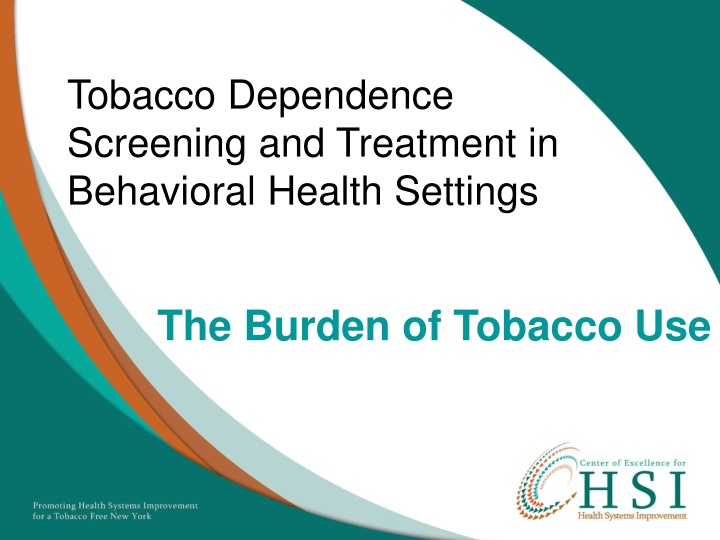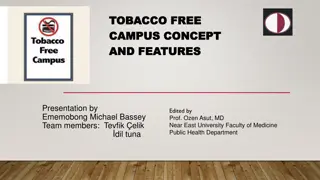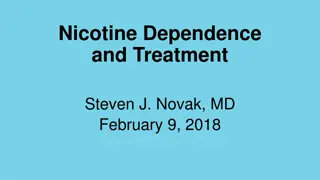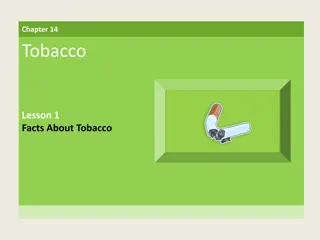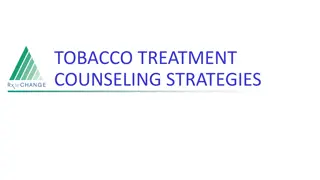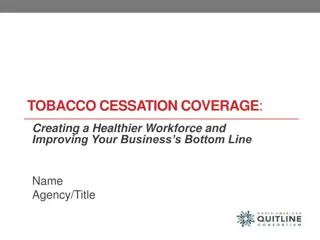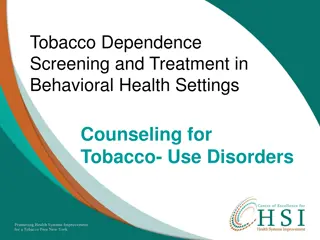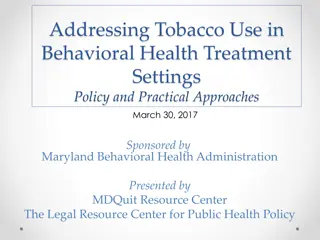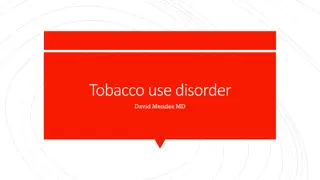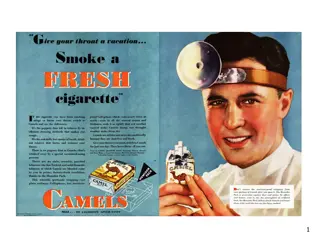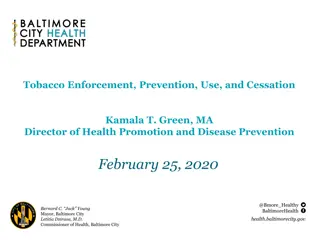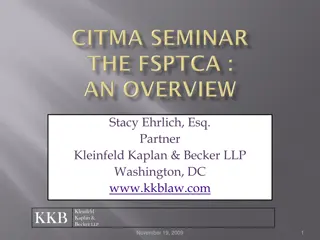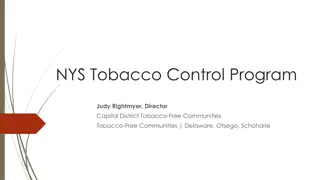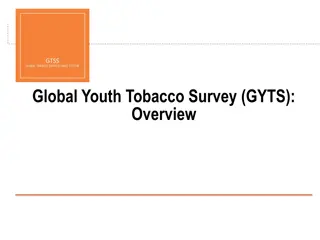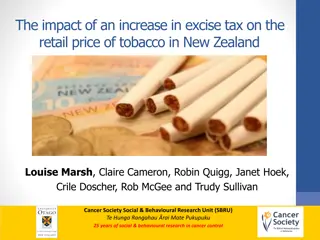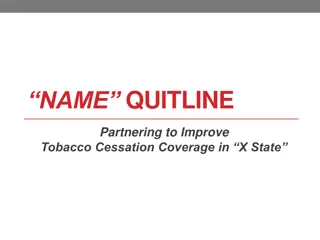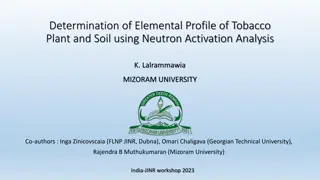Addressing Tobacco Dependence in Behavioral Health Settings
Tobacco use poses a significant burden on health, leading to preventable deaths and serious illnesses. Nicotine addiction makes quitting challenging, especially for individuals with mental health conditions. Despite concerns, it is essential to provide cessation services to behavioral health patients as they can benefit from proven stop-smoking treatments.
Download Presentation

Please find below an Image/Link to download the presentation.
The content on the website is provided AS IS for your information and personal use only. It may not be sold, licensed, or shared on other websites without obtaining consent from the author.If you encounter any issues during the download, it is possible that the publisher has removed the file from their server.
You are allowed to download the files provided on this website for personal or commercial use, subject to the condition that they are used lawfully. All files are the property of their respective owners.
The content on the website is provided AS IS for your information and personal use only. It may not be sold, licensed, or shared on other websites without obtaining consent from the author.
E N D
Presentation Transcript
Tobacco Dependence Screening and Treatment in Behavioral Health Settings The Burden of Tobacco Use
Tobacco Use Causes Death Tobacco use is the number one cause of preventable disease and death Every year, approximately 25,500 New Yorkers die prematurely as a result of their tobacco use More than 500,000 New Yorkers live with serious tobacco- caused illnesses and disabilities Exposure to secondhand smoke causes about 3,000 premature deaths from diseases including heart disease, lung cancer, and stroke in NYS every year 2
Tobacco is Addictive Most tobacco users become addicted to nicotine, a drug that is found naturally in tobacco More people in the United States are addicted to nicotine than to any other drug Research suggests that nicotine may be as addictive as heroin, cocaine, or alcohol Quitting tobacco is hard and may require several attempts. People who stop tobacco often start again because of withdrawal symptoms, stress, and weight gain. Nicotine withdrawal symptoms may include feeling irritable, angry, or anxious, having trouble thinking, craving tobacco products and feeling hungrier than usual 3
Tobacco Use Rates & Mental Health In NYS, smoking prevalence is 33.7% among adults with poor mental health compared to 14.3% among adults who do not have poor mental health. 1 in 5 adults in the United States have some type of mental illness. 4
Tobacco Use Rates & Substance Use Disorders 5
Addressing Tobacco Use with Behavioral Health Patients There are concerns about providing cessation services to behavioral health patients: oDon t want to take tobacco away while they are trying to manage symptoms oPatient might leave treatment oNot sure how to implement or how staff will react Despite challenges, it is important to implement treatment services Individuals with a Behavioral Health condition, like all clients, want to quit, can quit and can benefit from proven stop- smoking treatments 6
Treating Tobacco Dependence Using Evidence-Based Strategies Tobacco dependence is a chronic, relapsing disease that requires repeated intervention and multiple attempts to quit Providers need to consistently identify and document tobacco use status and treat every tobacco user seen Ongoing counseling, support, and appropriate pharmacotherapy are required to achieve long-term abstinence Counseling and treatment need to be offered at every visit to every patient willing to quit to maximize their chances of successfully quitting 7
